Abstract
A theoretical framework is presented which explores two models of suppressor cell-target cell interactions in T-dependent antibody responses. The first is the full-dominance model, in which a single or limited number of suppressor cells can entirely suppress an immune response irrespective of the multiplicity of other effector cells present. The second is the ratio-dominance model, in which a suppressor cell is capable of inactivating only a certain number of target cells. Thus, the multiplicity of target cells in a given microculture well influences the degree of suppression. Both models are evaluated using limiting dilution analysis and two systems are explored. In the first model, suppressor cells alone are titrated into microculture wells containing all other cells required for an immune response. In the second, suppressor cells are added from populations containing a mixture of helper T cells as well as suppressor cells. This latter type of analysis is similar to that in which populations of T cells primed to alloantigens in mixed lymphocyte cultures are analysed for positive (help) and negative (suppression) allogeneic effects. The analysis allows us to conclude that such suppressor cells operate via a mechanism best described by a ratio-dominance model.
Full text
PDF
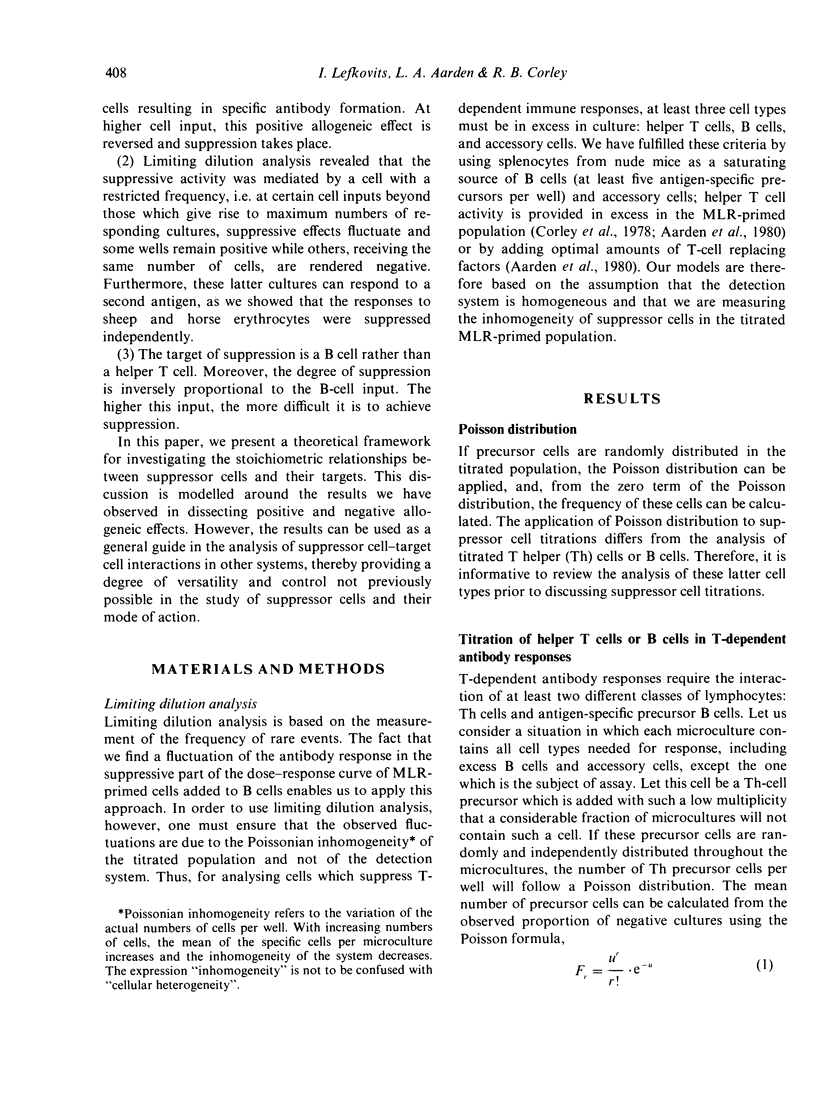
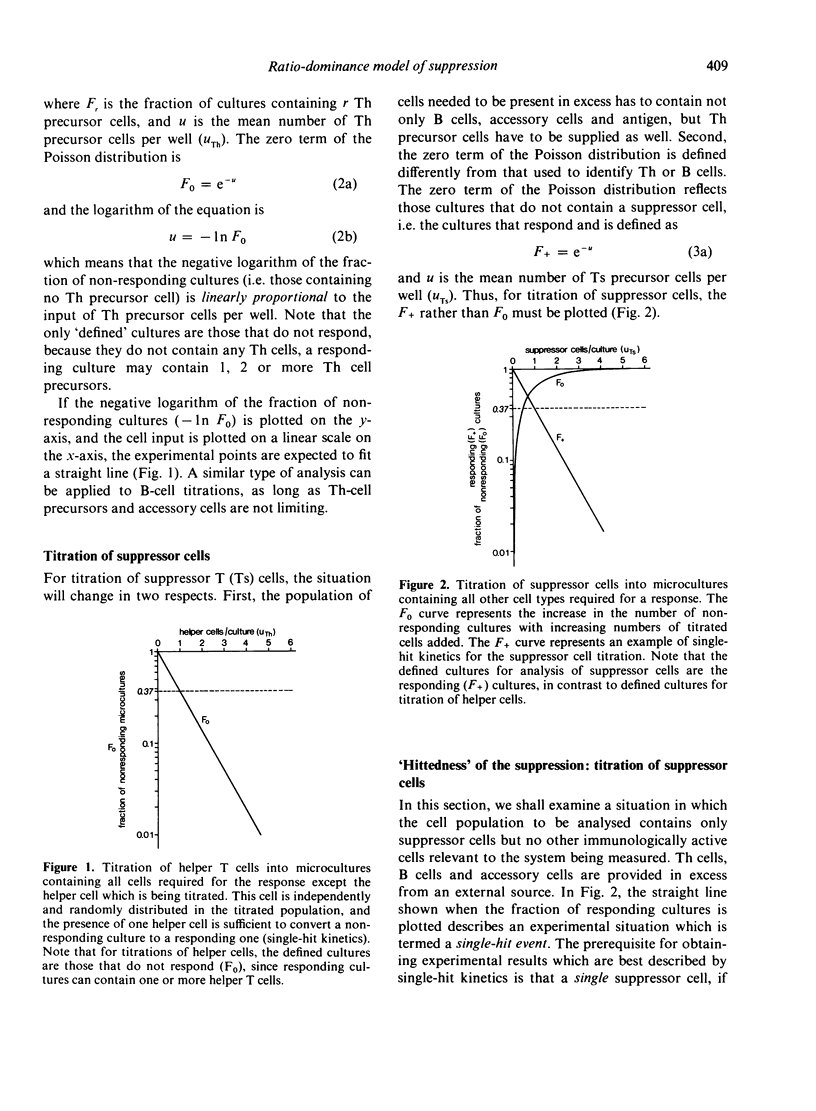
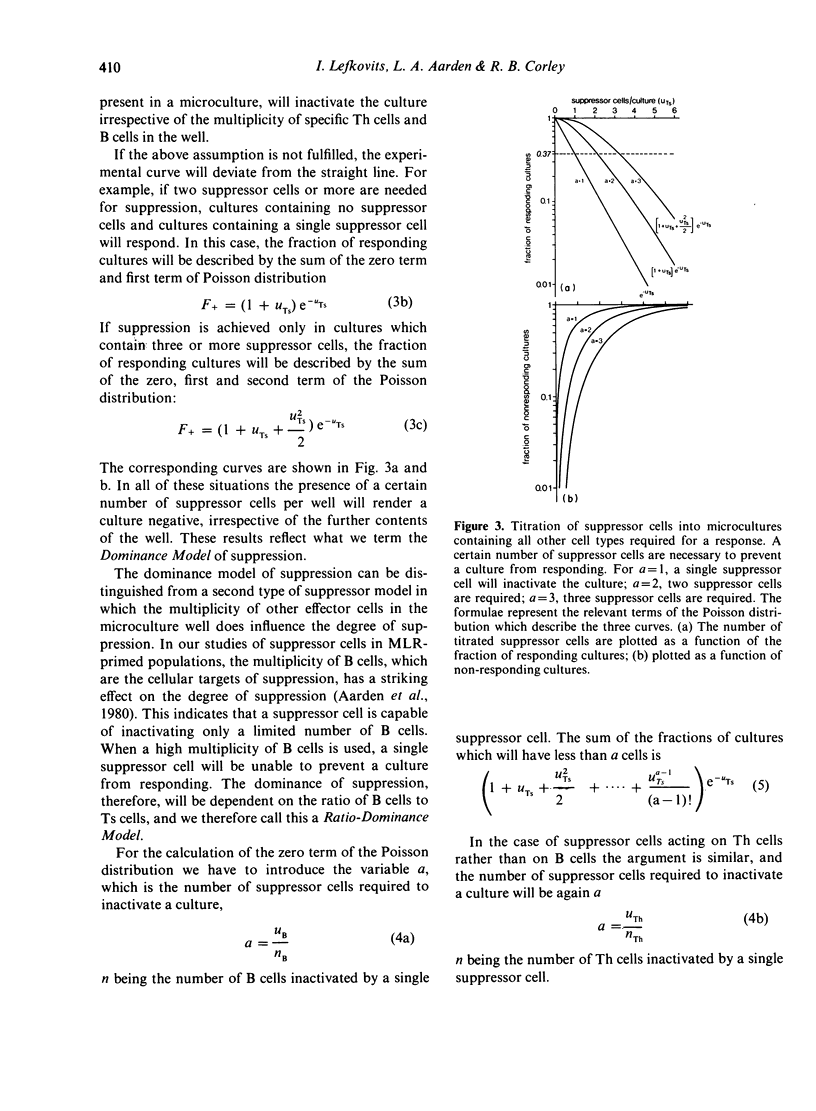
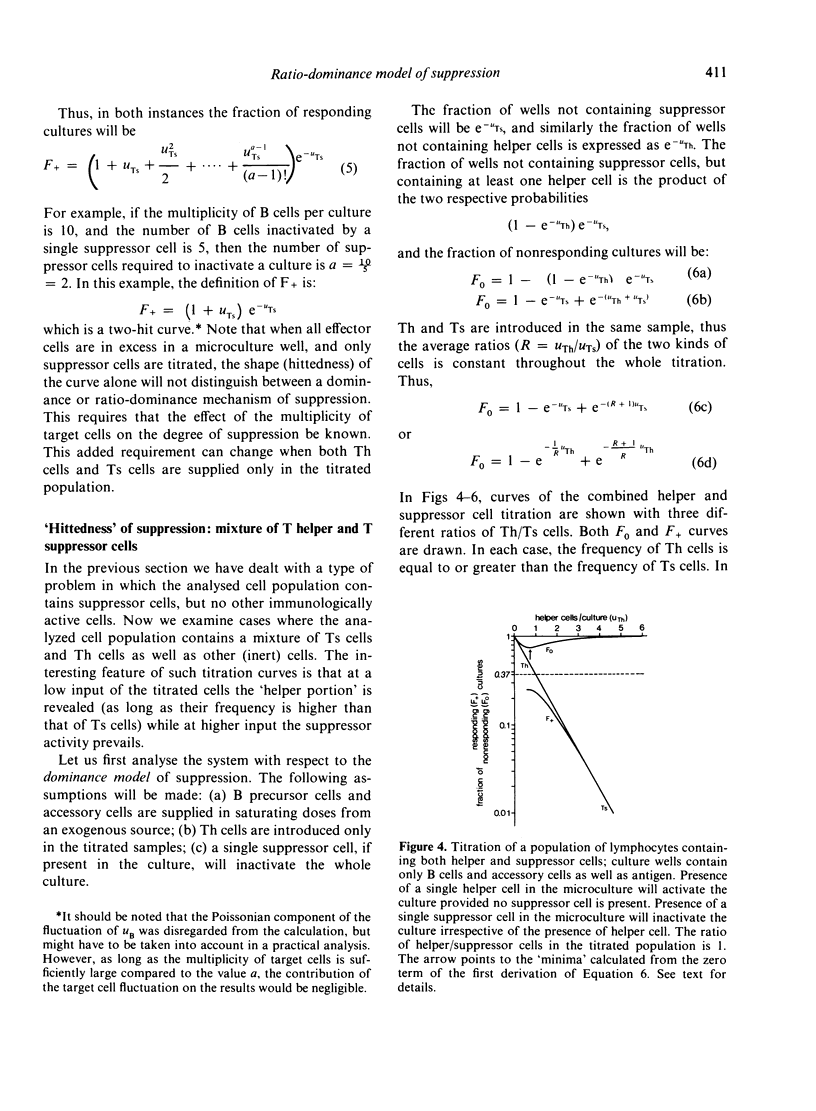
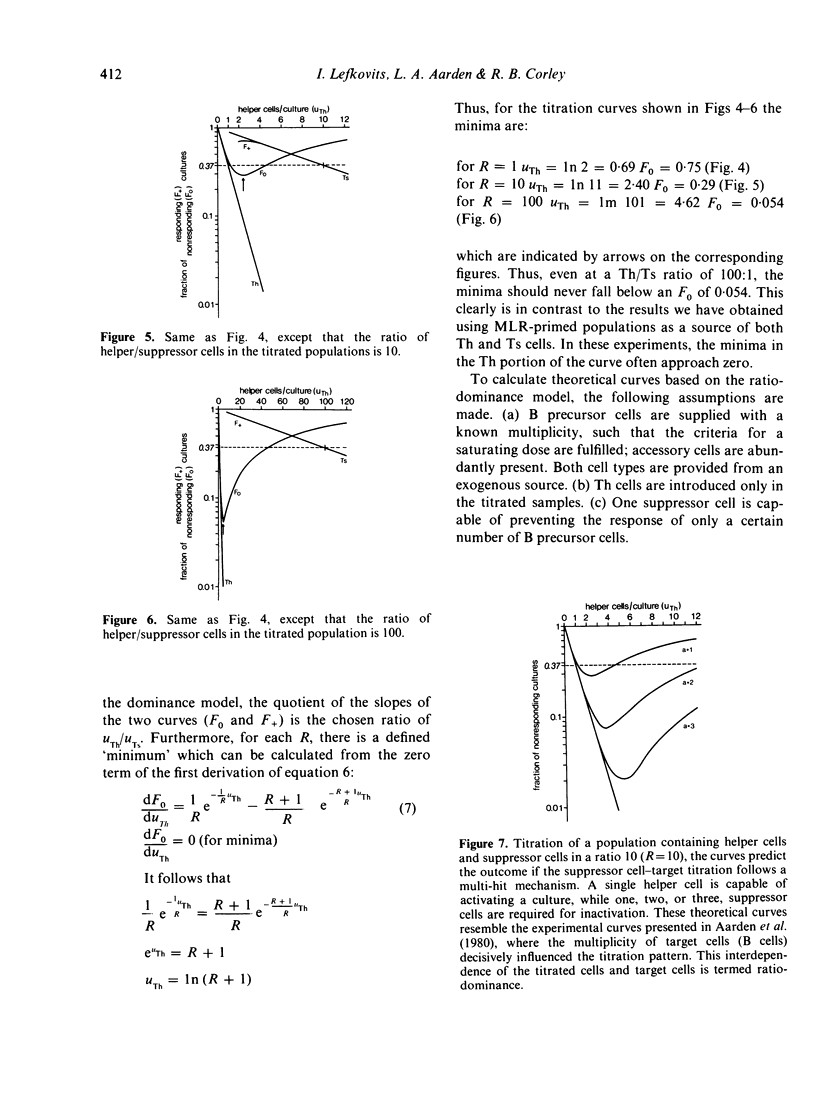
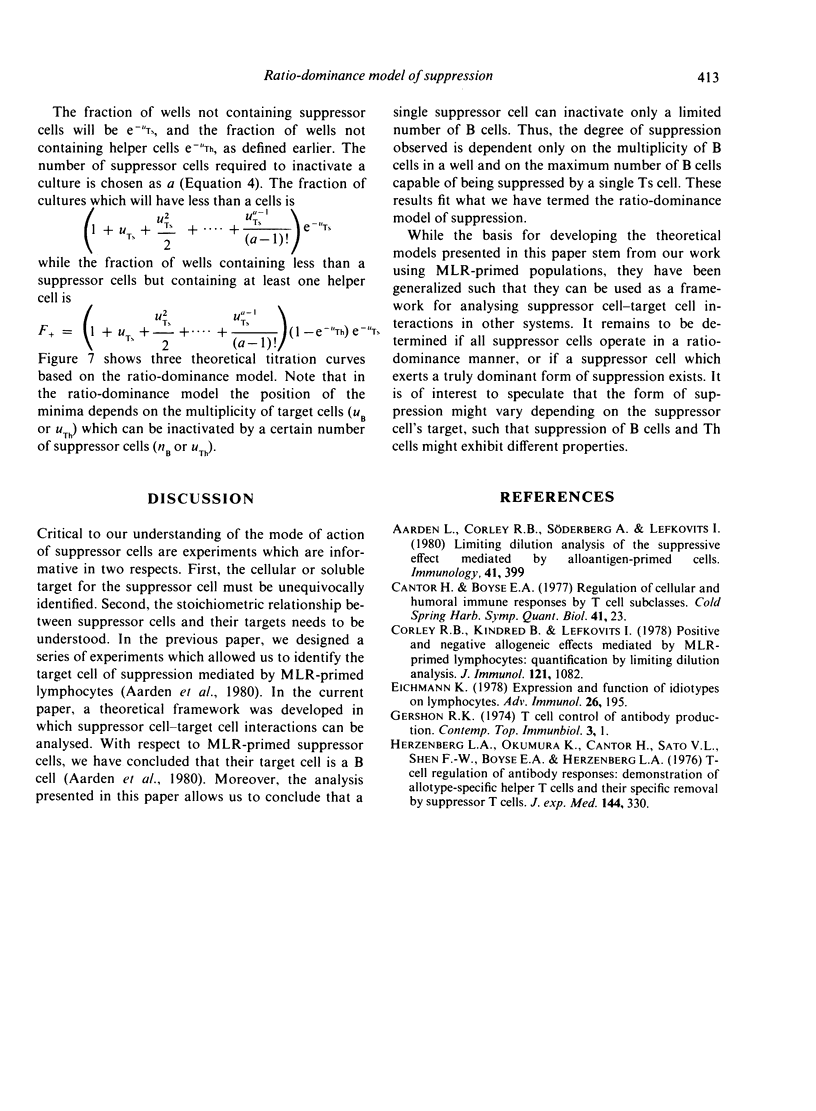
Selected References
These references are in PubMed. This may not be the complete list of references from this article.
- Aarden L., Corley R. B., Söderberg A., Lefkovits I. Limiting dilution analysis of the suppressive effect mediated by alloantigen-primed cells. Immunology. 1980 Oct;41(2):399–406. [PMC free article] [PubMed] [Google Scholar]
- Cantor H., Boyse E. A. Regulation of cellular and humoral immune responses by T-cell subclasses. Cold Spring Harb Symp Quant Biol. 1977;41(Pt 1):23–32. doi: 10.1101/sqb.1977.041.01.006. [DOI] [PubMed] [Google Scholar]
- Corley R. B., Kindred B., Lefkovits I. Positive and negative allogeneic effects mediated by MLR-primed lymphocytes: quantitation by limiting dilution analysis. J Immunol. 1978 Sep;121(3):1082–1089. [PubMed] [Google Scholar]
- Eichmann K. Expression and function of idiotypes of lymphocytes. Adv Immunol. 1978;26:195–254. doi: 10.1016/s0065-2776(08)60231-x. [DOI] [PubMed] [Google Scholar]
- Gershon R. K. T cell control of antibody production. Contemp Top Immunobiol. 1974;3:1–40. doi: 10.1007/978-1-4684-3045-5_1. [DOI] [PubMed] [Google Scholar]
- Herzenberg L. A., Okumura K., Cantor H., Sato V. L., Shen F. W., Boyse E. A., Herzenberg L. A. T-cell regulation of antibody responses: demonstration of allotype-specific helper T cells and their specific removal by suppressor T cells. J Exp Med. 1976 Aug 1;144(2):330–344. doi: 10.1084/jem.144.2.330. [DOI] [PMC free article] [PubMed] [Google Scholar]


